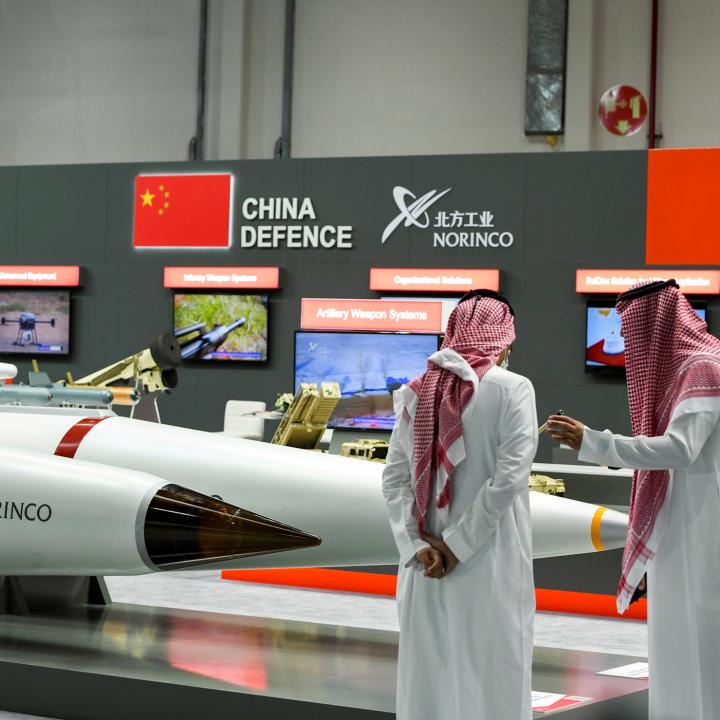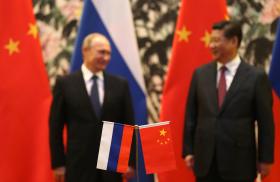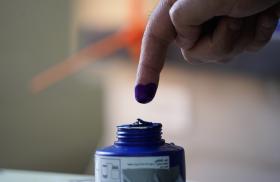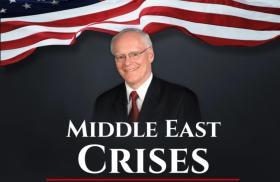
- Policy Analysis
- PolicyWatch 4091
Arms Sales and the Middle East: Another Arena for Great Power Competition?

Security experts discuss Russia and China’s varying approaches to expanding their weapons exports and broader influence in the region and beyond.
On August 13, The Washington Institute held a virtual Policy Forum with Samuel Bendett, Ionela Ciolan, Laura Cressey, and Jake Rinaldi. Bendett is an advisor in the Russia Studies Program at the Center for Naval Analyses. Ciolan is a research officer with the Wilfried Martens Centre for European Studies, focusing on policy, security, and defense issues. Cressey is former director of the State Department’s Office of Regional Security and Arms Transfers. Rinaldi is an associate political scientist at the RAND Corporation, focusing on Chinese military strategy and modernization. The following is a rapporteur’s summary of their remarks.
Samuel Bendett
Despite suffering strategic setbacks in the Middle East—from the loss of its Syrian ally to continued civil war in Libya—Russia still views the region as a significant market for arms sales. Its military systems are a proven commodity, especially in the Middle East, leaving many countries keen to maintain contact with Russian suppliers. The Kremlin sees arms sales as not just about hardware, but also about forging relationships with countries and creating new partnerships.
The Ukraine war has significantly affected Russia’s actions in this sector, particularly regarding what it can export. Most weapon systems are now being directed internally to its own military, with many technologies, vehicles, and small arms prioritized for the frontlines. Moscow hopes the floodgates of foreign arms sales will reopen after the war. According to recent Russian government statements, there will be a large queue for its arms after the conflict, and the defense industry will once again be able to manufacture large quantities of weapons for export.
This expectation is largely due to the fact that Middle Eastern countries have many decades of experience with Russian arms and see little reason to switch suppliers. A key selling point for them will be the Kremlin’s marketing of “battle-proven” systems that have undergone unique, continuous, real-world testing. Countries such as Libya, Algeria, Iraq, Iran, and Sudan are expected to be interested in many of these products, and weapons that did not receive as much attention from importers in the past—such as different drone types—may get a closer look due to their importance in the Ukraine war. In contrast, Egypt and Algeria have begun diversifying their suppliers and developing more indigenous systems, potentially cutting into several Russian export markets.
As for Moscow’s cooperation with India, officials should view it in the context of existing bilateral and multilateral partnerships (e.g., BRICS). India has been a long-time purchaser of Russian arms, and the Kremlin will likely continue sending military technology to New Delhi given the value it places on their relationship.
Ionela Ciolan
The European Union seeks greater strategic responsibility and a stronger security and defense posture, particularly after Russia’s invasion of Ukraine. The continent is in the midst of a significant security crisis, and the possibility of Russian attacks on EU/NATO territory in the coming years cannot be ruled out. Meanwhile, President Trump is calling for greater European responsibility, and EU officials want to maintain collaboration with the United States on this front. By 2035, the EU aims to build 40 percent of its defense capabilities through European joint procurement.
Challenges abound, however. At the strategic level, European defense matters are decided by individual nations who often lack a shared understanding of the threats facing the EU. Moreover, the European defense market is fragmented and needs better interoperability and more capacity to scale up. Taken together, EU countries represent the world’s second-largest arms exporter after the United States, but their export policies are poorly coordinated. Despite formulating common rules for approving exports, each country applies them differently—there is no EU-wide enforcement. Countries that sign defense agreements with the EU are expected to respect humanitarian law under the union’s framework, but this is often not enforced. Such inconsistencies create a credibility gap and complicate EU efforts to exert influence on Middle East partners. Moreover, any European defense agreements with Israel face public pressure from various member states due to the war in Gaza.
Despite these issues, the EU is taking proactive steps to strengthen its defense framework. It has established a European Defense Union to address gaps in strategic capabilities. It is also increasing the resilience of its technological and defense industrial base, as well as expanding joint procurement in air, missile, cyber, and space defense systems. Additionally, it aims to build a common European defense market—an effort that includes exploring whether Turkey could participate in a joint procurement initiative. Indeed, rekindling that relationship could help foster deeper multilateral defense cooperation and strengthen NATO’s European pillar.
Laura Cressey
The current Trump administration’s policy on arms sales shares numerous parallels with his first administration’s approach. For instance, it has reverted to its previous Conventional Arms Transfer (CAT) Policy, reducing the emphasis on civilian harm and humanitarian concerns while increasing the focus on supporting U.S. businesses—in line with the president’s assertion that economic security is national security. The administration is also prioritizing efforts to improve efficiency in military sales, pointing out that long delivery times place a heavy burden on U.S. partners in the Middle East and elsewhere. Shortening these timelines is a goal with broad bipartisan support. This effort includes reviewing and reducing the FMS-Only List, under which certain defense articles can only be purchased through the Foreign Military Sales program. Another goal is to rationalize technology security and foreign disclosure policy.
Notably, the administration is focused more on the operation of arms transfers than the CAT Policy itself. This has become an “all hands on deck” issue, with House representatives launching an “FMS Task Force” and elements of the U.S. defense industry seeking to bolster supply resiliency, production capacity, and delivery speed. Washington is eager to expand its arms sales, including in the Middle East, where countries remain interested in procuring the most advanced American systems. President Trump’s May trip to the Gulf states foreshadowed these objectives, and significant arms sales to the region should be expected. Yet three policy indicators will determine just how significant.
First, will the president require countries to normalize relations with Israel before they can buy the most advanced U.S. weaponry, a condition that his first administration placed on the United Arab Emirates? Early indicators are that normalization will not be a prerequisite for exports to Saudi Arabia. The administration may have calculated that Riyadh’s posture toward the Yemeni Houthis and its response during the recent strikes on Iran’s nuclear program are sufficient demonstration of its position toward Israel; alternatively, officials may have concluded that potential sales to the kingdom are just too substantial to ignore.
Second, how will the administration interpret the statutory requirement on maintaining Israel’s qualitative military edge? If the president interprets it broadly to allow for expanded exports to the region, how will Congress respond? Despite strong congressional reactions to Palestinian suffering in Gaza, there is still steady bipartisan support for maintaining Israel’s QME.
Third, will the president continue liberalizing Washington’s interpretation of its commitments under the Missile Technology Control Regime? One argument for doing so is that it could increase U.S. flexibility and enable American firms to sell drones more broadly, including to the Middle East.
Jake Rinaldi
China frequently uses arms exports to increase partner capabilities in countries where it has established large economic projects or other initiatives, particularly when those countries are experiencing instability. This approach is heavily influenced by the substantial Soviet assistance that China received in its early years; today, Beijing similarly aims to shape military performance and behavior in partner nations. It also hopes that arms exports will build relationships with military and political elites in order to cultivate a pro-China bloc.
In addition, Beijing is poised to capitalize on gaps left by Russia, where it can target niche markets and tailor systems to meet specific needs. When trading with countries like Iran and North Korea, it has switched to dual-use transfers to avoid international reputational costs. It has helped Tehran establish production lines for the Nasr antiship missile and provided the BeiDou navigation system, which has military and civilian applications. In the Gulf, China has expanded its defense partnerships with various governments and supported Saudi efforts to develop indigenous drone production capabilities. Such efforts could wind up creating distance between these partners and the United States.
In practice, Beijing’s approach to alliances differs significantly from Washington’s, often focusing on deconfliction rather than deep operational integration. While Chinese interoperability with foreign militaries should be monitored, it is not a major concern at present. A notable exception is Beijing’s relationship with North Korea, a close and strategically sensitive partnership where Chinese intervention is more likely given geographic proximity.
This summary was prepared by Claudia Groeling and Yoni Wolf. The Policy Forum series is made possible through the generosity of the Florence and Robert Kaufman Family.






